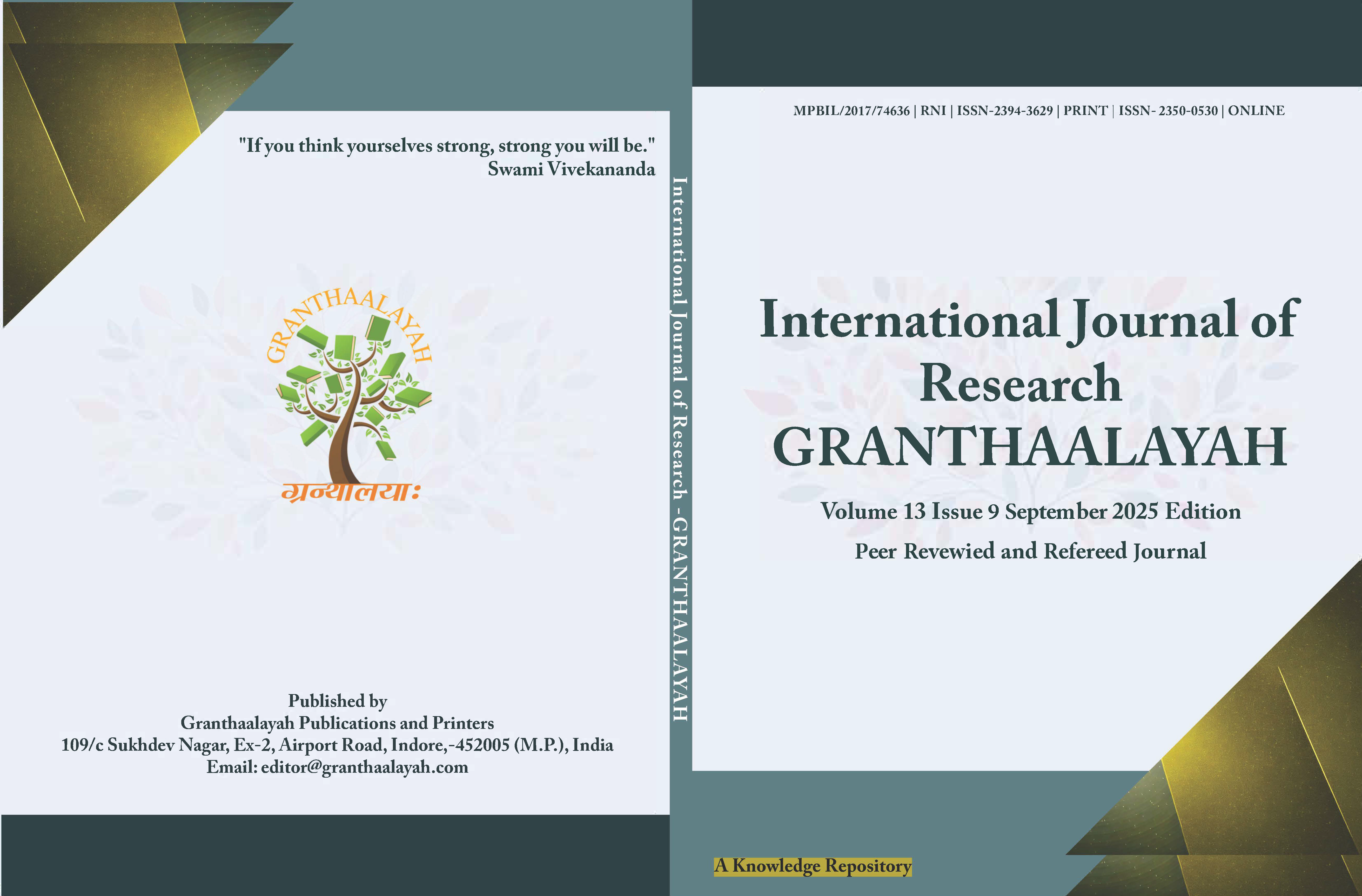“FROM BRICKS TO CLICKS”: RETAIL TECHNOLOGY TRENDS TOWARDS CUSTOMER VALUE CREATION IN ORGANISED CHAINS WITH REFERENCE TO BANGALORE
DOI:
https://doi.org/10.29121/granthaalayah.v13.i9.2025.6378Keywords:
Ai in The Retail Contexts, Iot in The Retail Contexts, Augmented Reality, Digital Retail StoreAbstract [English]
This transformation of the bricks to clicks has redesigned the retailing one of the organized apparel markets, has the potential of leading the digital innovation in the retail world. Consumers now strongly require smooth, individualized and immersive shopping experiences, which is causing retailers to implement innovative technologies that include Artificial Intelligence (AI), Internet of Things (IoT), Augmented Reality (AR),Virtual Reality (VR) and interactive digital screens.
AI facilitates one-on-one recommendations, trend prediction and chat bot services whereas IoT makes sure that there is real-time stock management via RFID tags and smart shelves. Displaying digital screens offer active advert placements in-store and AR/VR can enable the use of virtual dressing rooms and fully interactive brand environments, connecting the online and offline shop. The tech-friendly growth of Bangalore with its diverse consumer base and equally competitive apparel market creates an interesting set towards examining how well such technologies are being adopted, and how effective.
Although there have been heavy investments on such innovations, there is little empirical evidence on the direct effect of the innovations on the customer value creation in the form of satisfaction, engagement, loyalty, trust and purchase confidence.
This research paper fills the above-mentioned gap as it examines the perception of customers and the current situation with retailers along with their practices to find out the real potential of retail technologies in organized chains. The emerging concepts will help innovative retailers, technology providers, or policymakers formulate strategies that will not only generate more customer value but also provide sustainable competitiveness in the dynamic retail environment of Bangalore
Downloads
References
Aslam, U., Rehman, C. A., & Alshammari, S. (2023). AI Innovations in Market Development: A Cross-Industry Perspective. Technological Forecasting and Social Change, 186, 122073. https://doi.org/10.1016/j.techfore.2022.122073 DOI: https://doi.org/10.1016/j.techfore.2022.122073
Gong, S. (2023). Digital Transformation of supply Chain Management in retail and e-Commerce. International Journal of Retail & Distribution Management. https://doi.org/10.1108/ijrdm-02-2023-0076 DOI: https://doi.org/10.1108/IJRDM-02-2023-0076
Kovács, I., & Keresztes, É. R. (2024). Digital Innovations in e-Commerce: Augmented Reality Applications in Online Fashion Retail – A Qualitative Study Among Gen Z Consumers. Informatics, 11(3), 56. https://doi.org/10.3390/informatics11030056 DOI: https://doi.org/10.3390/informatics11030056
Nguyen, T. T., Ngo, L. V., & Ruël, H. (2023). AI Predictive Analytics in Retail: Current Practices and Future Directions. Journal of Retailing and Consumer Services, 69, 103126. https://doi.org/10.1016/j.jretconser.2022.103126 DOI: https://doi.org/10.1016/j.jretconser.2022.103126
Reddy, K. S., & Kar, A. K. (2023). Future Technologies in Retail Supply Chains: A Systematic Review and Research Agenda. Technological Forecasting and Social Change, 190, 122375. https://doi.org/10.1016/j.techfore.2023.122375 DOI: https://doi.org/10.1016/j.techfore.2023.122375
Uma, R., & Anbuselvi, R. (2023). Role of Micro Small and Medium Enterprises (MSME) in Employment Generation in India. Shanlax International Journal of Economics, 11(2). https://doi.org/10.34293/economics.v11i2.5809 DOI: https://doi.org/10.34293/economics.v11i2.5809
Xu, H., Zhou, Y., Chen, H., & Kou, Y. (2023). Evolutionary Game Analysis of Inter-Organizational Trust and Technology Sharing Behavior in Enterprise Collaborative Innovation. Journal of Intelligent & Fuzzy Systems, 45, 5723–5738. https://doi.org/10.3233/jifs-231898 DOI: https://doi.org/10.3233/JIFS-231898
Published
How to Cite
Issue
Section
License
Copyright (c) 2025 Satheeshkumar R, Sachana C, Pallavi. S

This work is licensed under a Creative Commons Attribution 4.0 International License.
With the licence CC-BY, authors retain the copyright, allowing anyone to download, reuse, re-print, modify, distribute, and/or copy their contribution. The work must be properly attributed to its author.
It is not necessary to ask for further permission from the author or journal board.
This journal provides immediate open access to its content on the principle that making research freely available to the public supports a greater global exchange of knowledge.






























